Day 22: Food!
Food is often seen as the identity of a country or culture, a way to remember its past and enjoy the present, leading to a slightly edited quote that says: “Tell me what you eat and I’ll tell you who you are.” 🙂
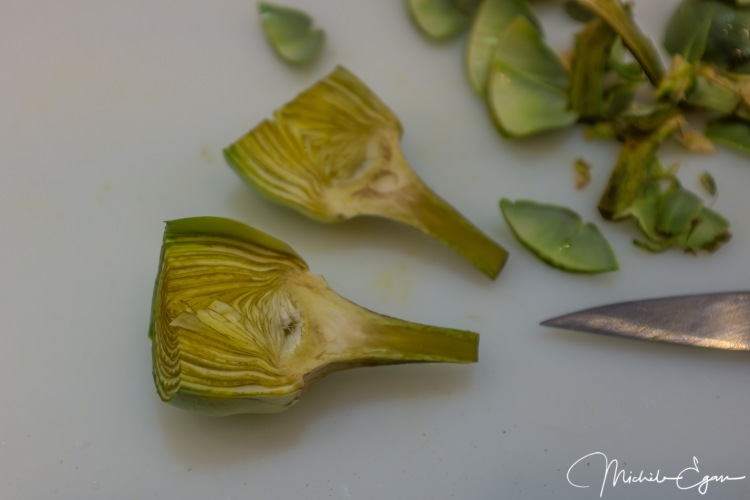
Earlier this morning, our little group enjoyed a presentation on the variety of foods that make up the culinary landscape of Spain, and on the many influences that helped shape it — from Phoenicians to Carthaginians, Greeks, Celts, Romans, Visigoths, French, Jews and Muslims, and even the Catholic church. I know I’ve been enjoying its varied dishes for the past three weeks, but to be aware of their subtleties was a nice exercise.
To truly understand food, you have to prepare it and cook it. So following the lecture, we set out to attend a cooking class and prepare three typical Spanish dishes: salmorejo (a cold tomato-based emulsion soup); espinacas con garbanzos — a specialty of Sevilla; and, finally, the purist’s paella: Valencia version — the only dish that can truly be referred to by that name (all other versions with seafood or other ‘decorations’ are simply called: arroz con…).
We were hosted by Taller Andaluz de Cocina, with Chef Dominico and assistant Victoria. See more information at the end of the post on how to secure a cooking class. It’s a wonderful operation and I would highly recommend the experience!
Here are some of the basic ingredients that we found on arrival:
First up on preparation was the wonderful salmorejo (the cold tomato- and bread-based soup). Its ingredients are similar to gazpacho, but while you drink that one, salmorejo is eaten with a spoon.
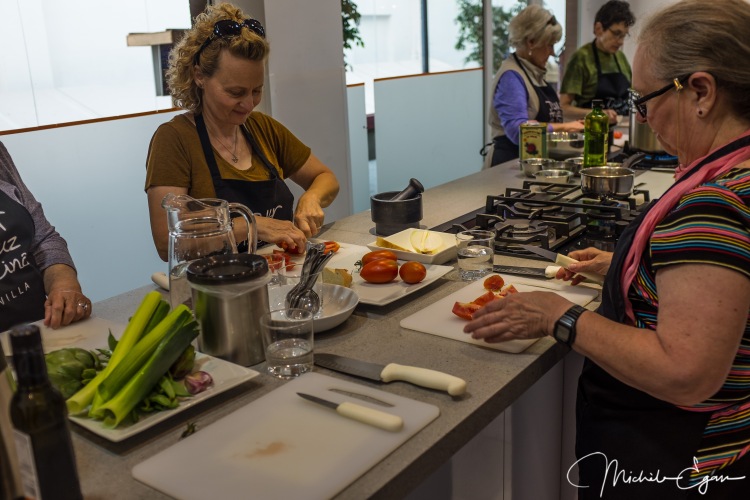
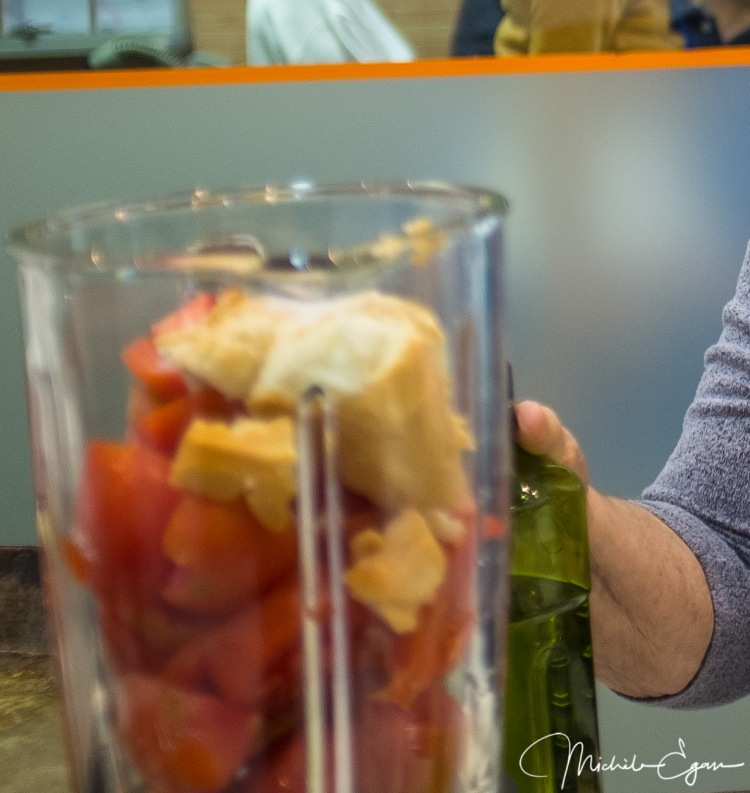
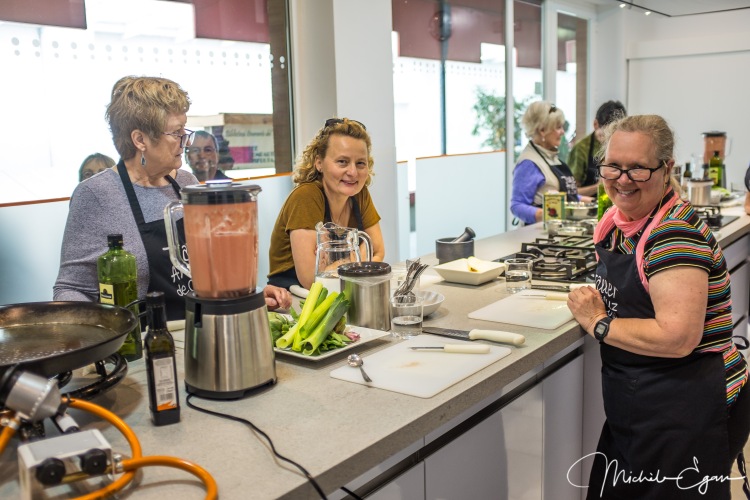
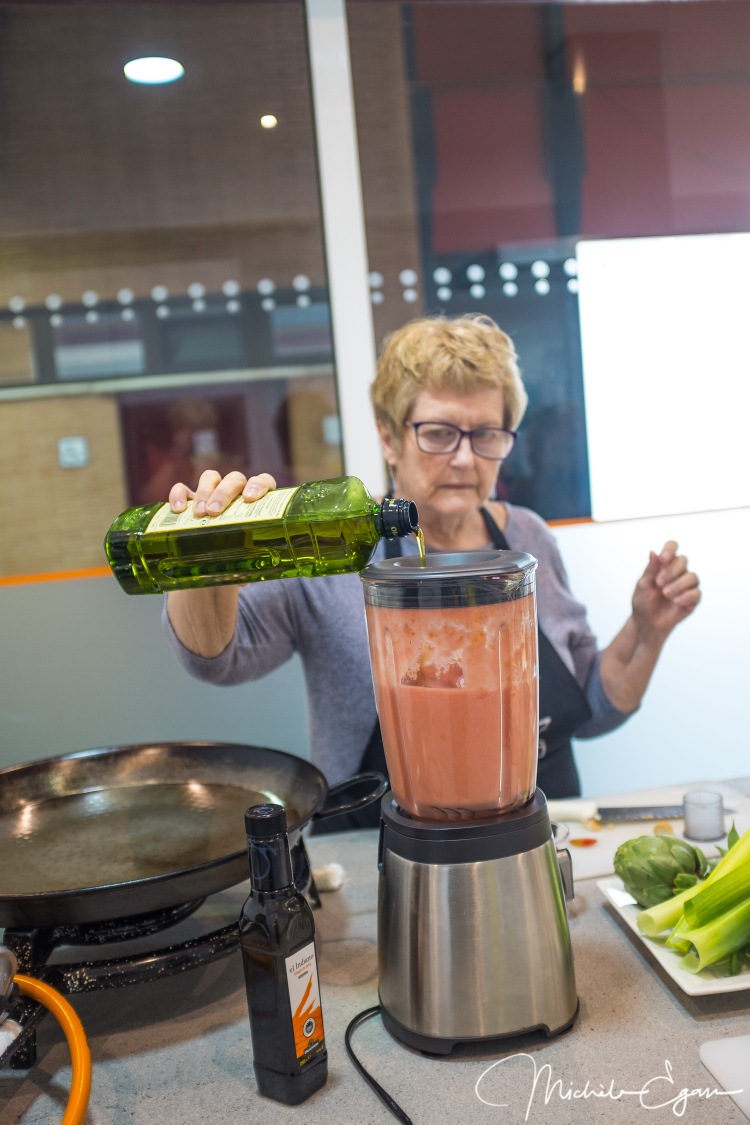
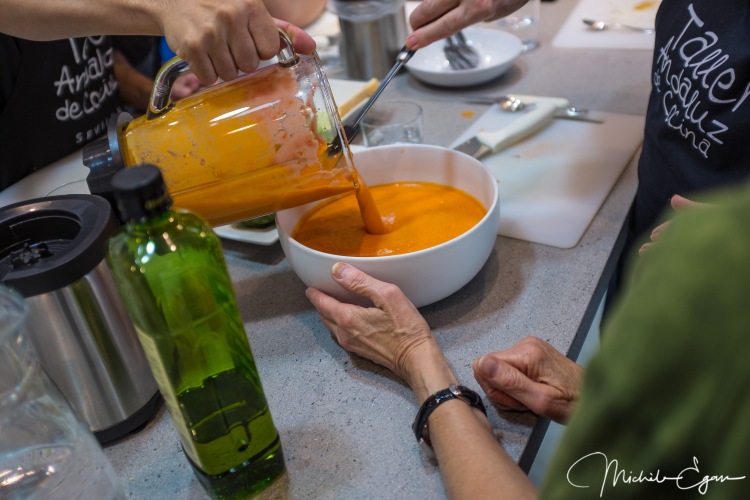
Next up was the prep for the espinacas con garbanzos. The spinach is fresh and boiled down; the garbanzo beans can be canned or can have been cooked as part of another typical Spanish dish — the cocido montañes, an old fashioned bone stew. That latter technique requires many more hours than we had for the task, so canned it was.
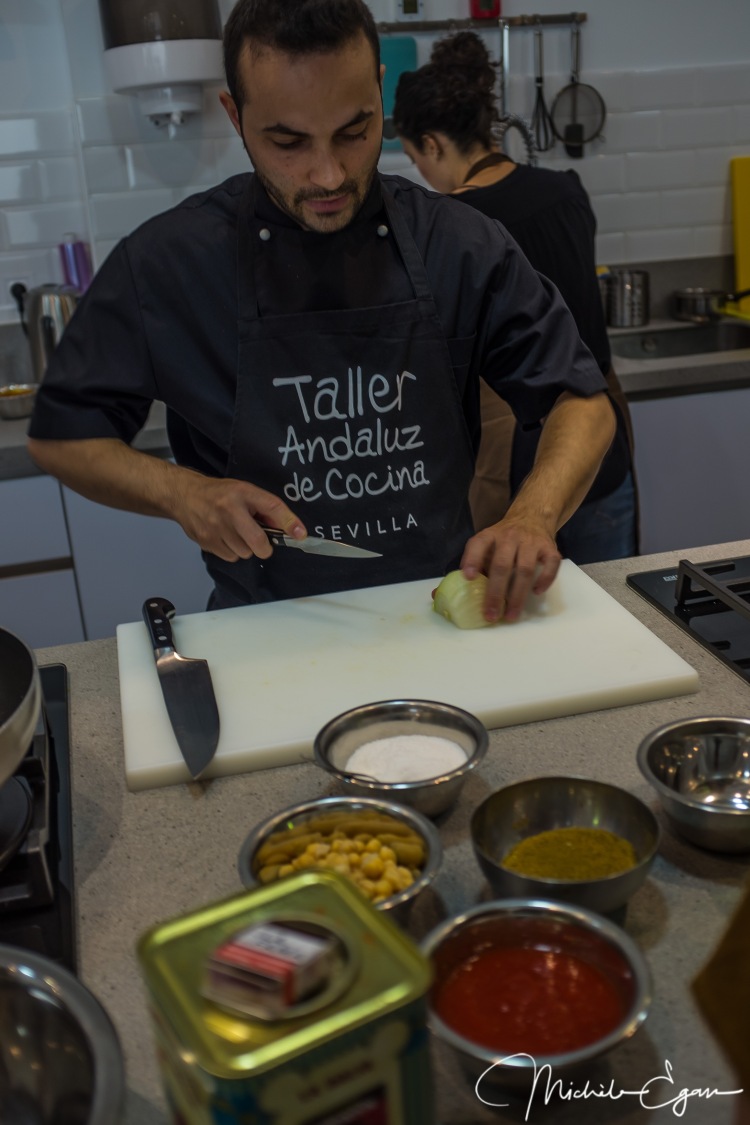
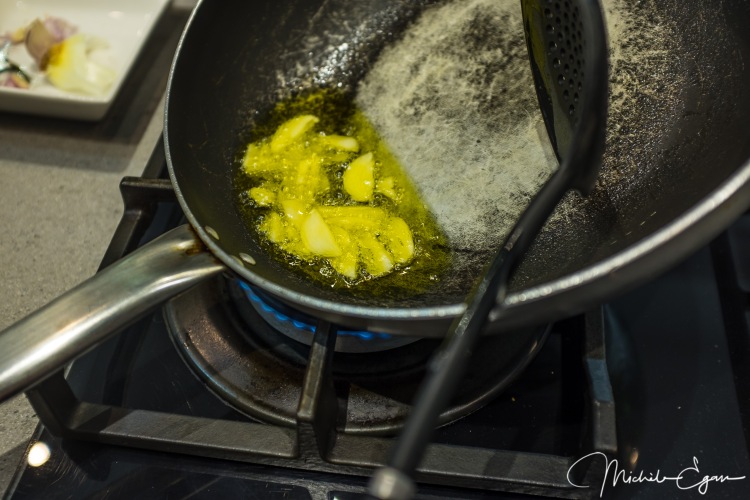
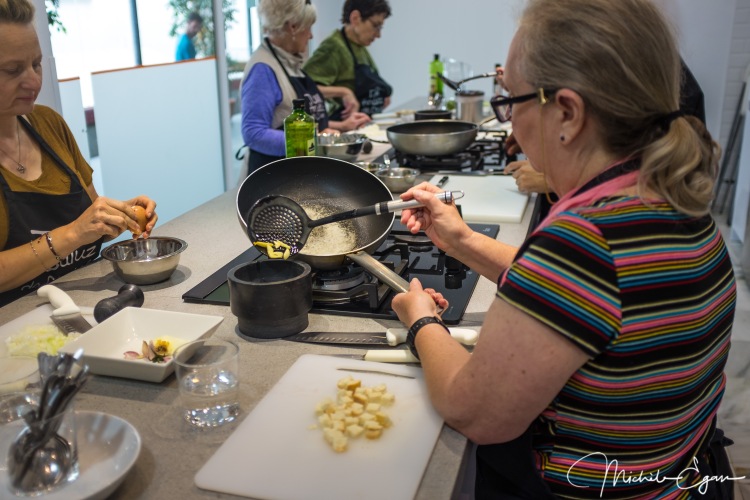
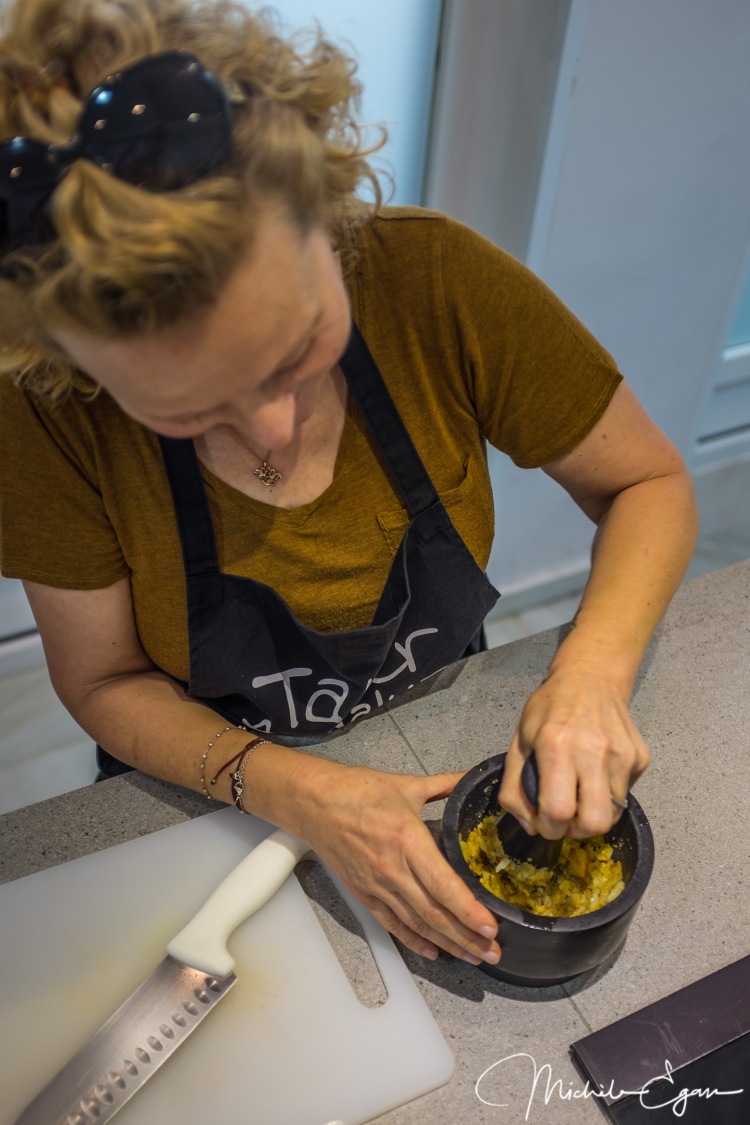
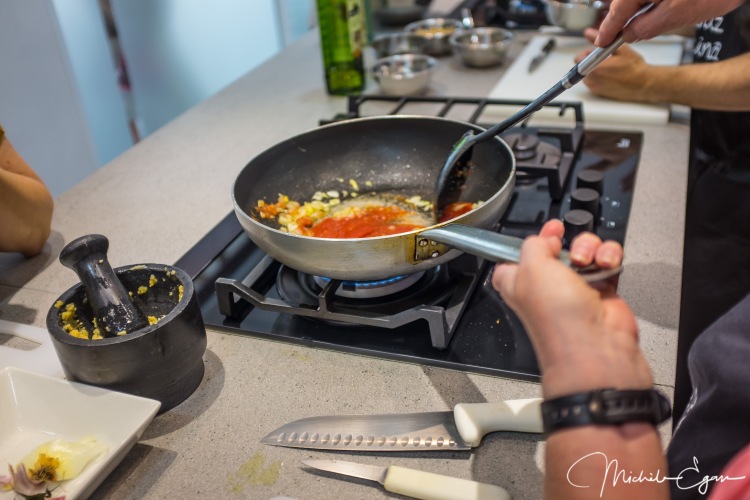
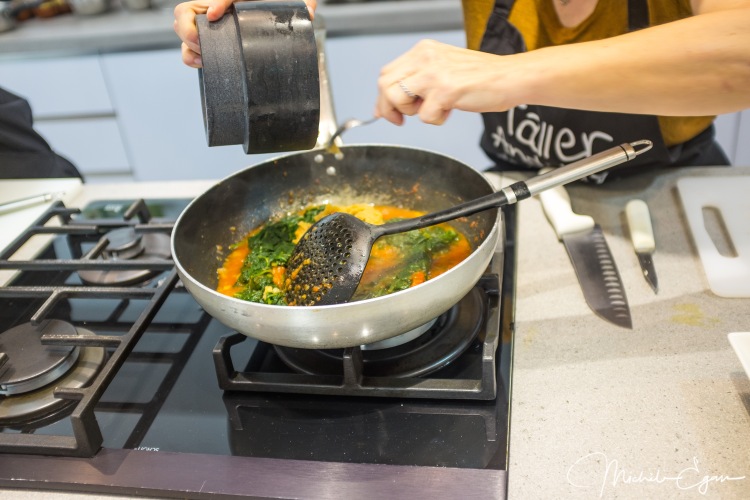
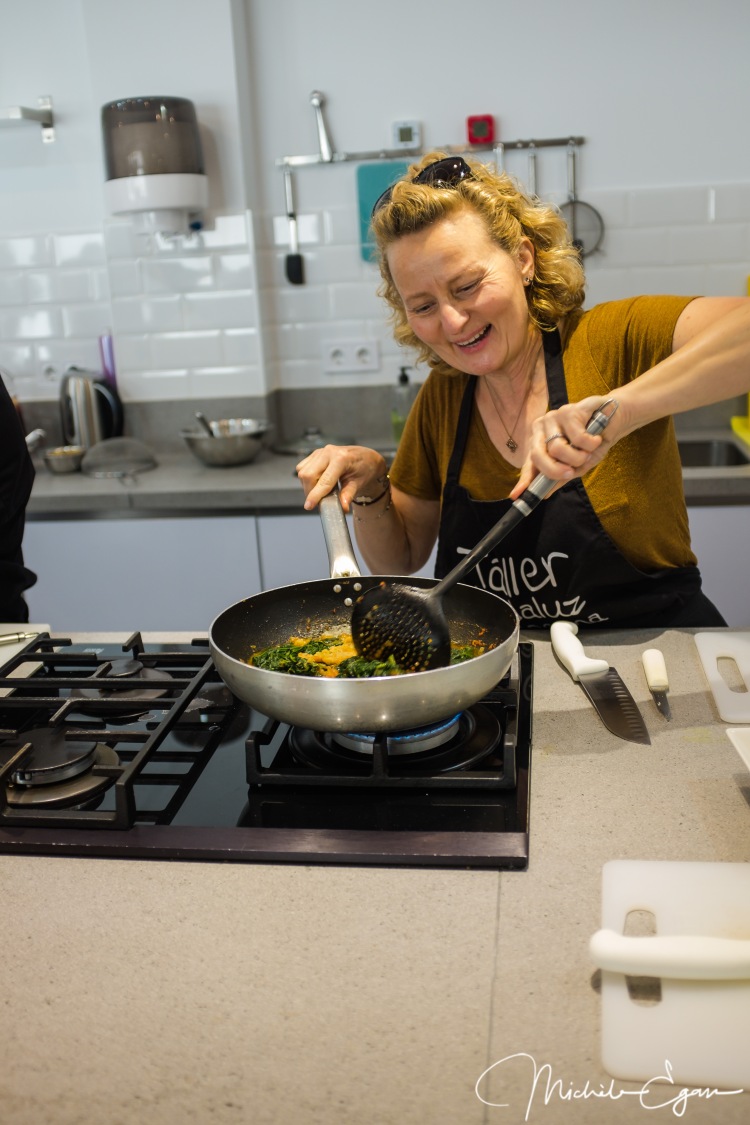
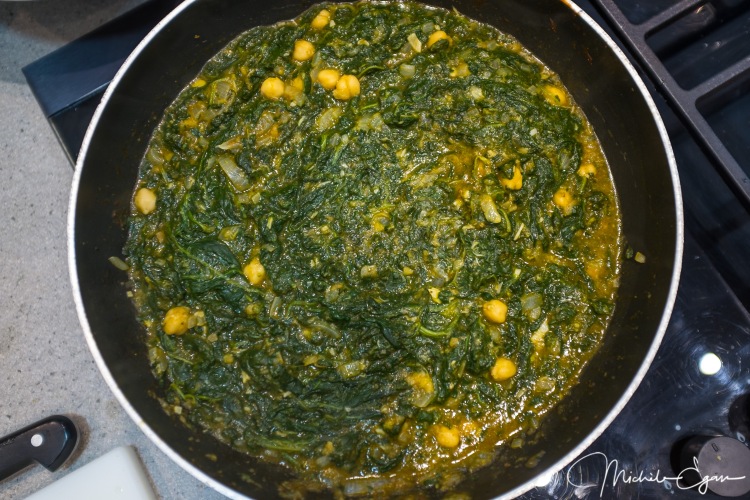
While this was going on, the green onions were boiling in a pot, as a base for the broth that will be needed for the paella. So let’s move right on to what’s involved in that! First, the traditional Valencian paella only calls for chicken and/or rabbit as the meat ingredients along with whatever vegetables are in season (today’s were broad green beans and artichokes). According to our chef, any other ingredients would disqualify the dish from being called a “paella” and only serve as “decoration.” 😉
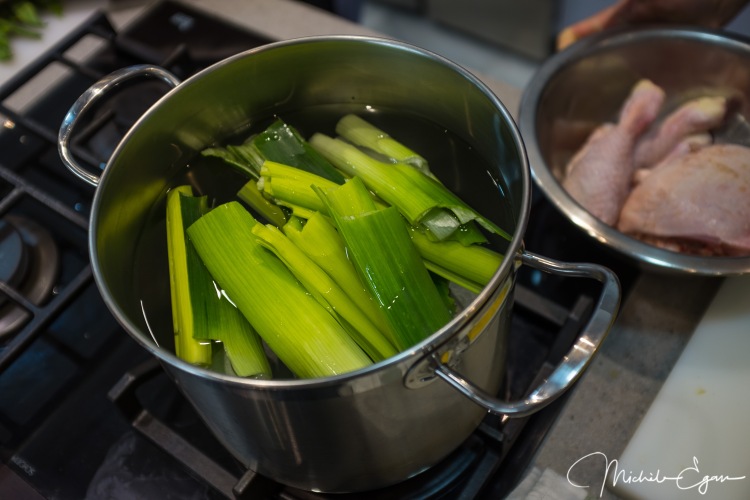
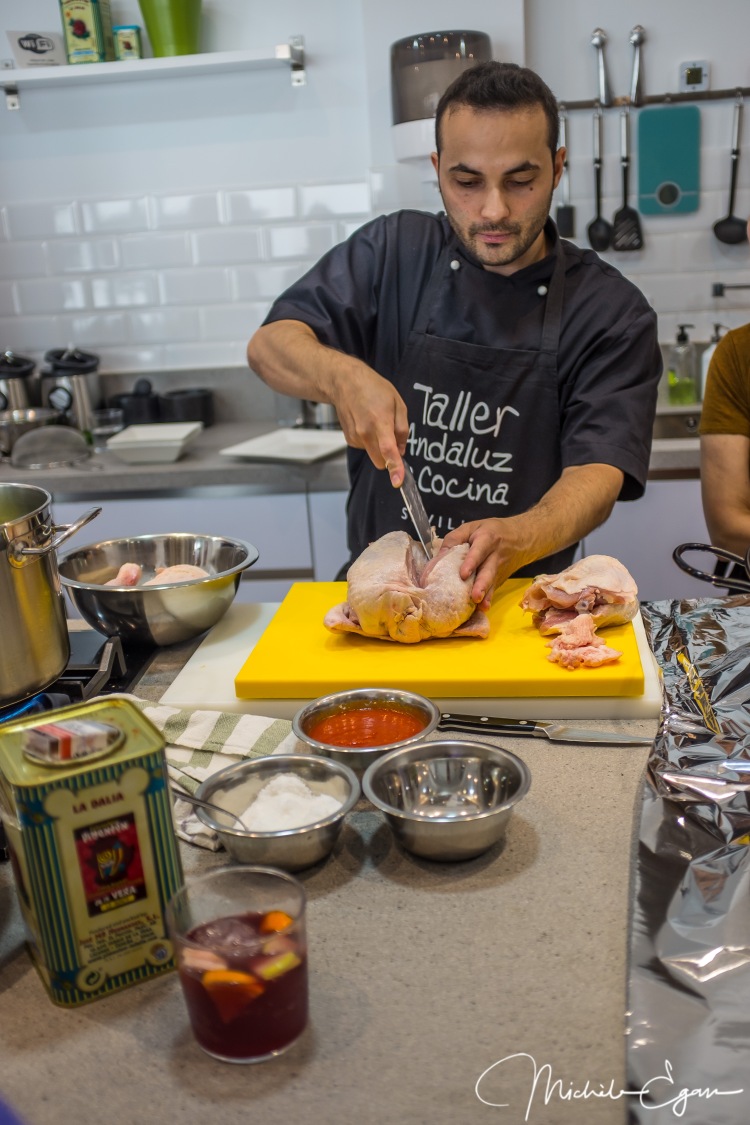
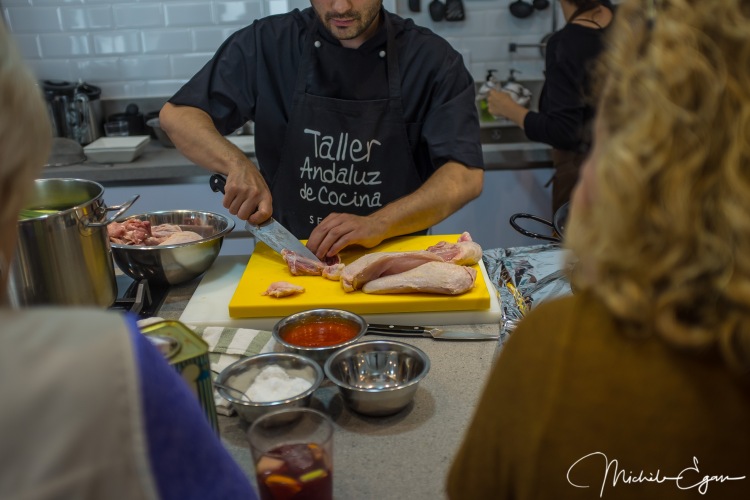
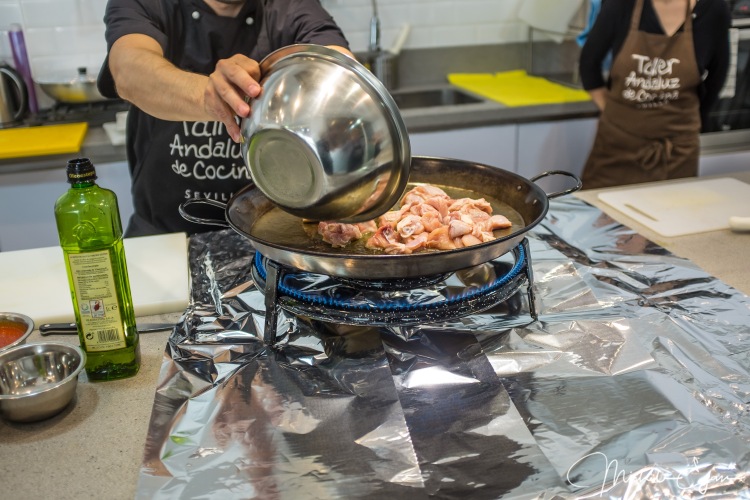
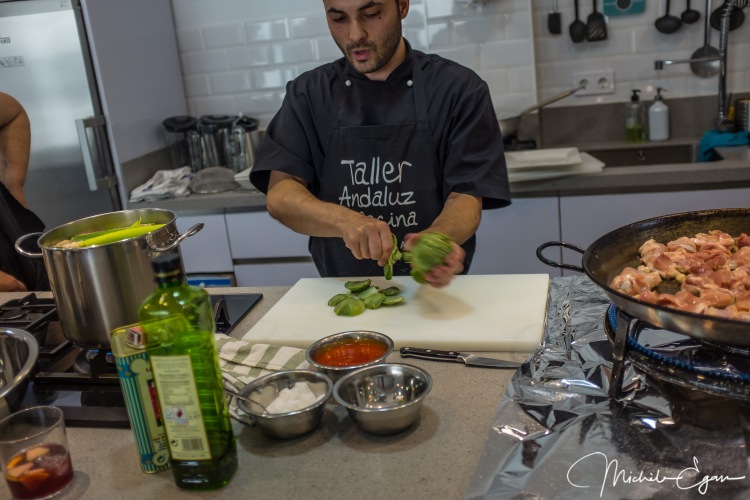
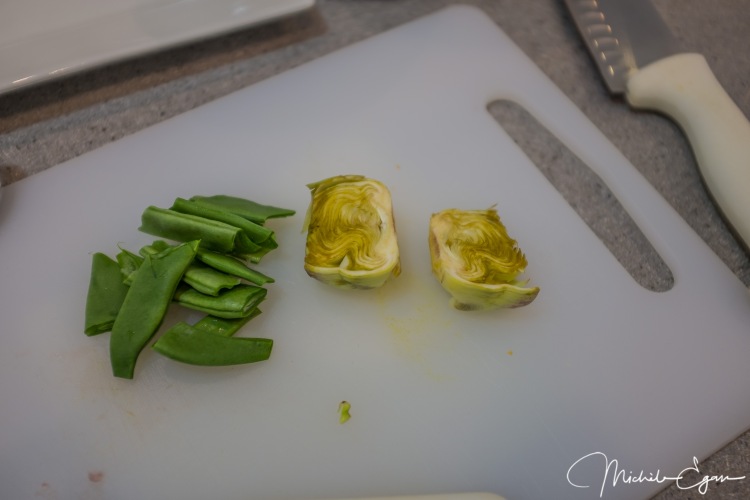
Now comes the fun part (and deliciously smelling part too!): cooking the ingredients. It’s a work a precision, so that no one element overwhelms any other.
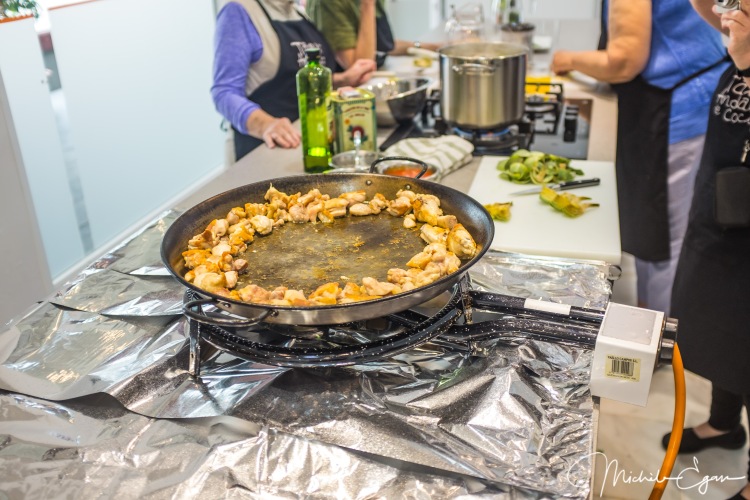
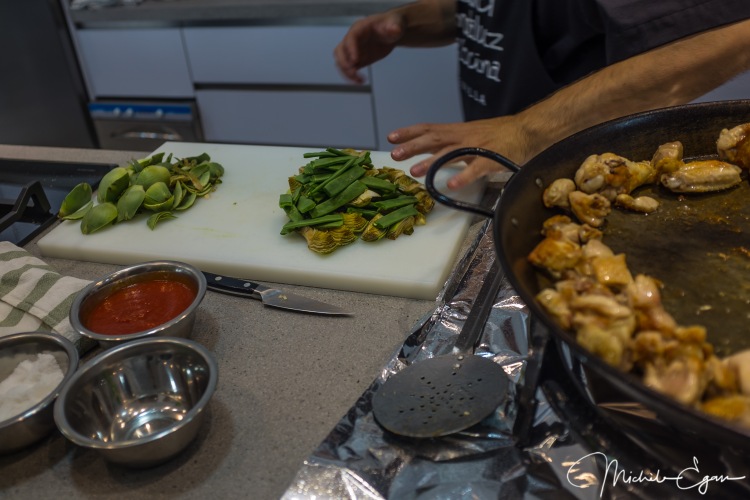
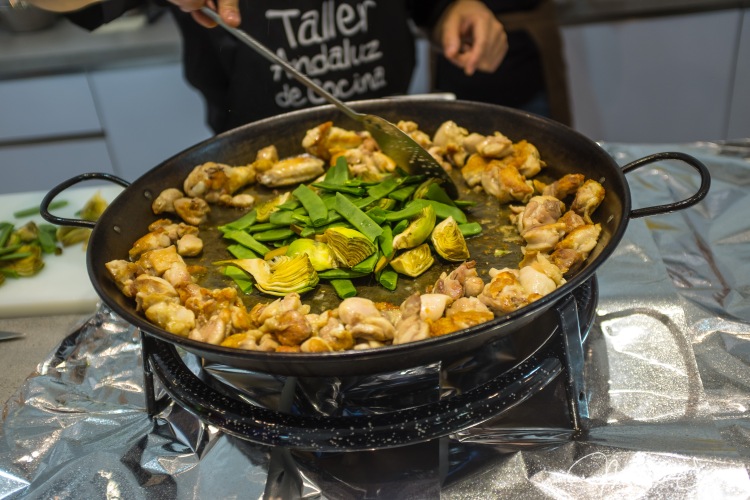
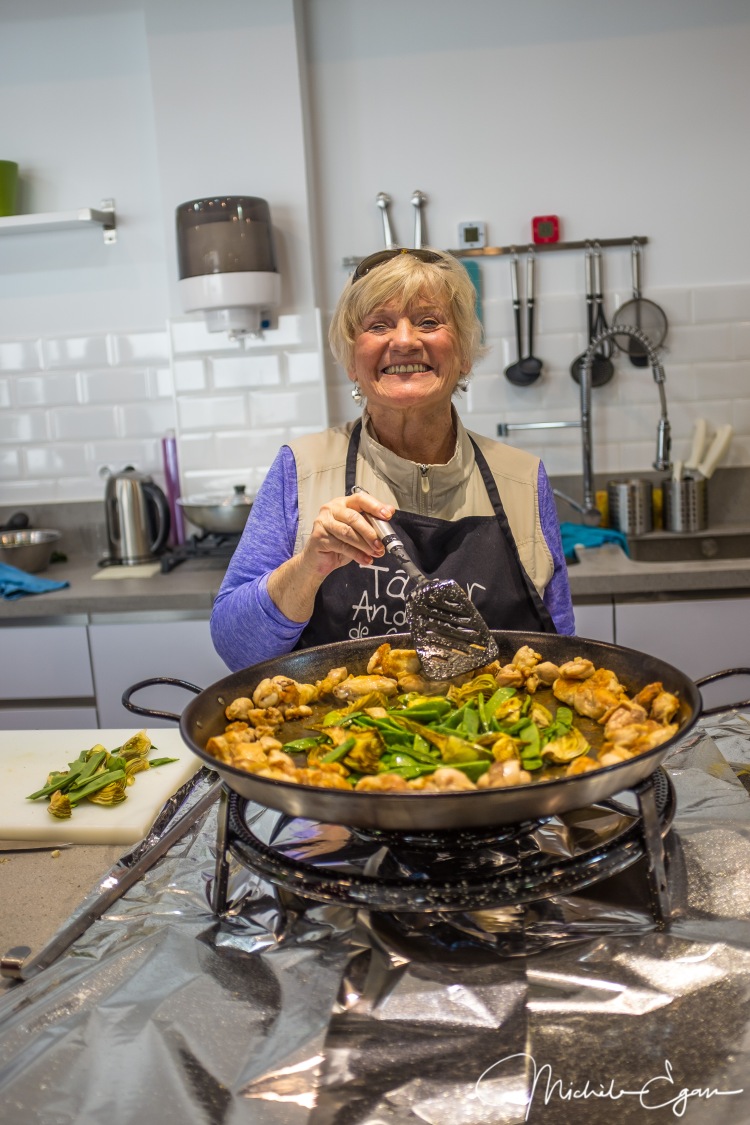
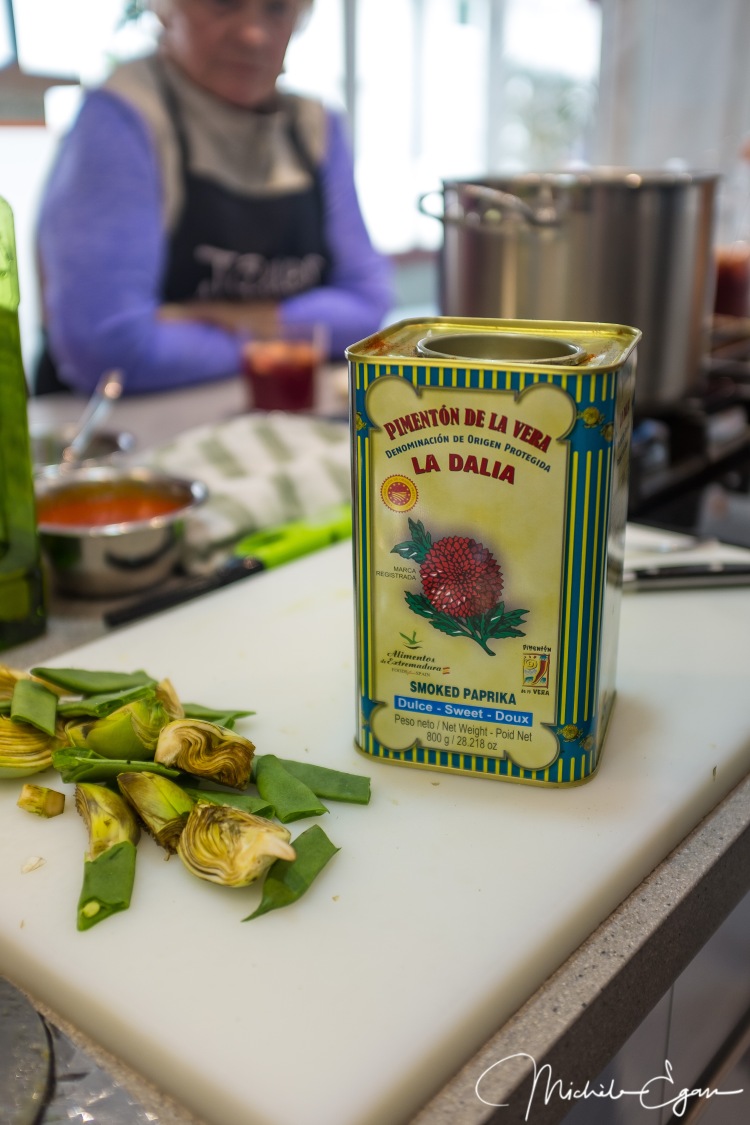
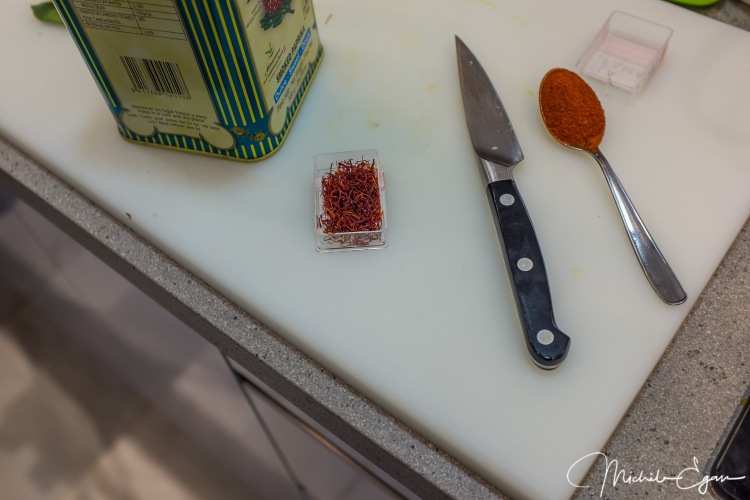
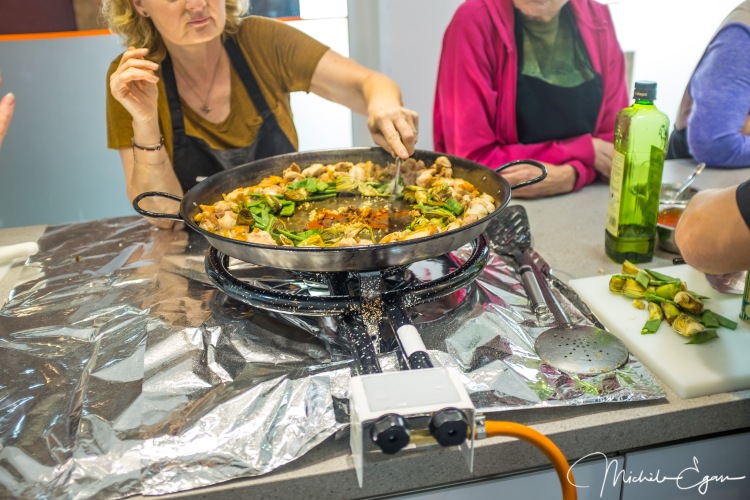
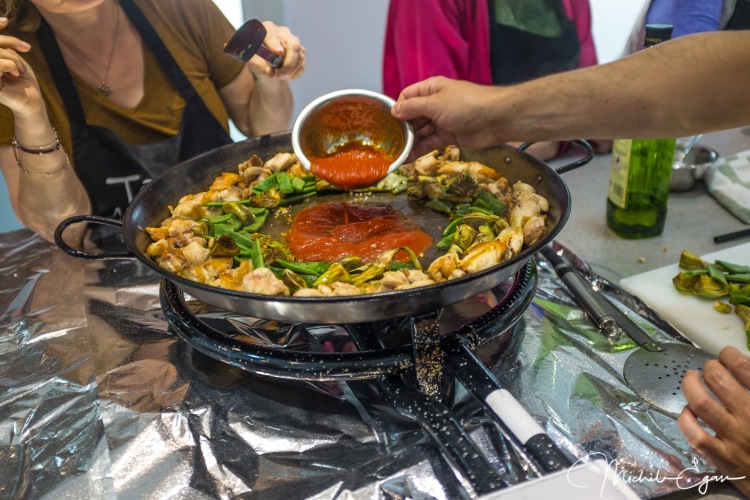
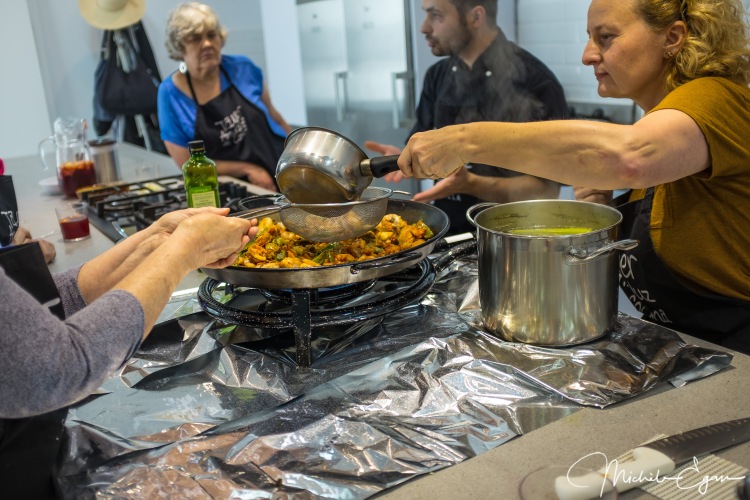
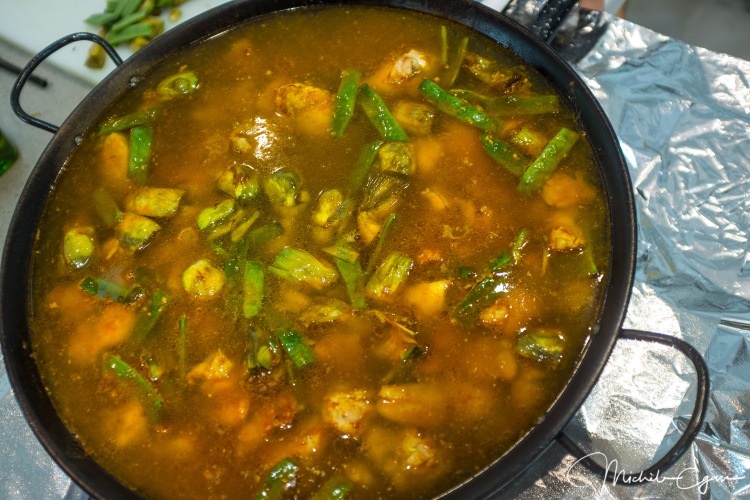
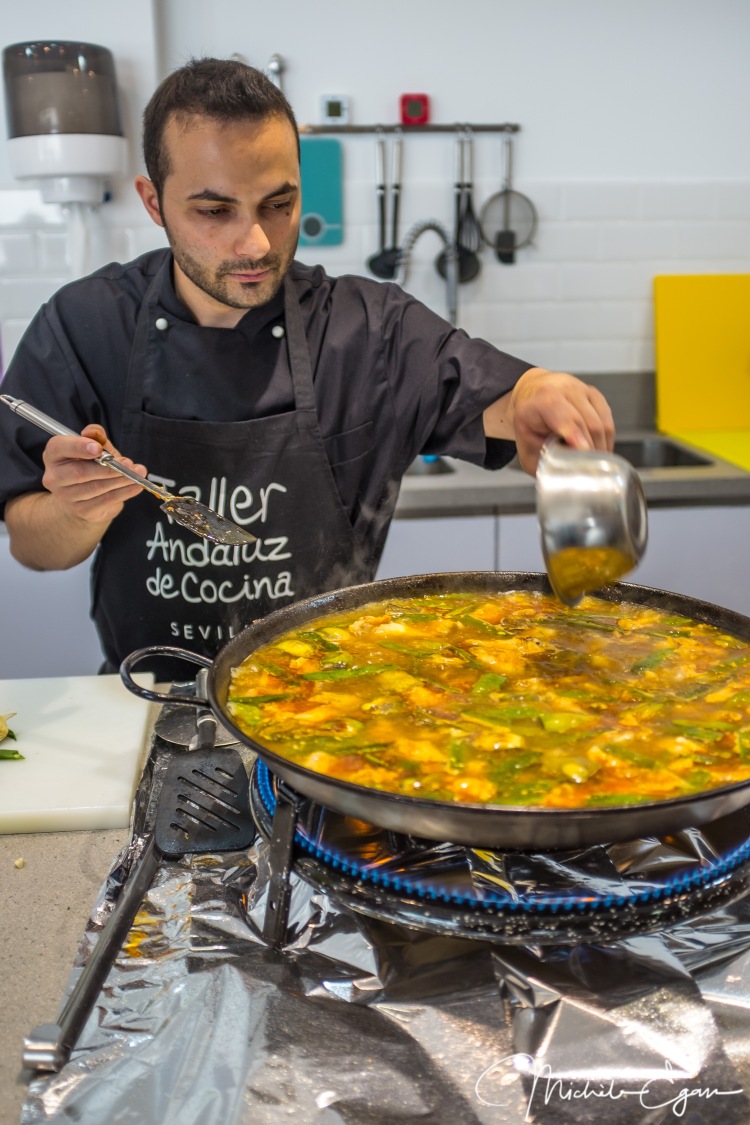
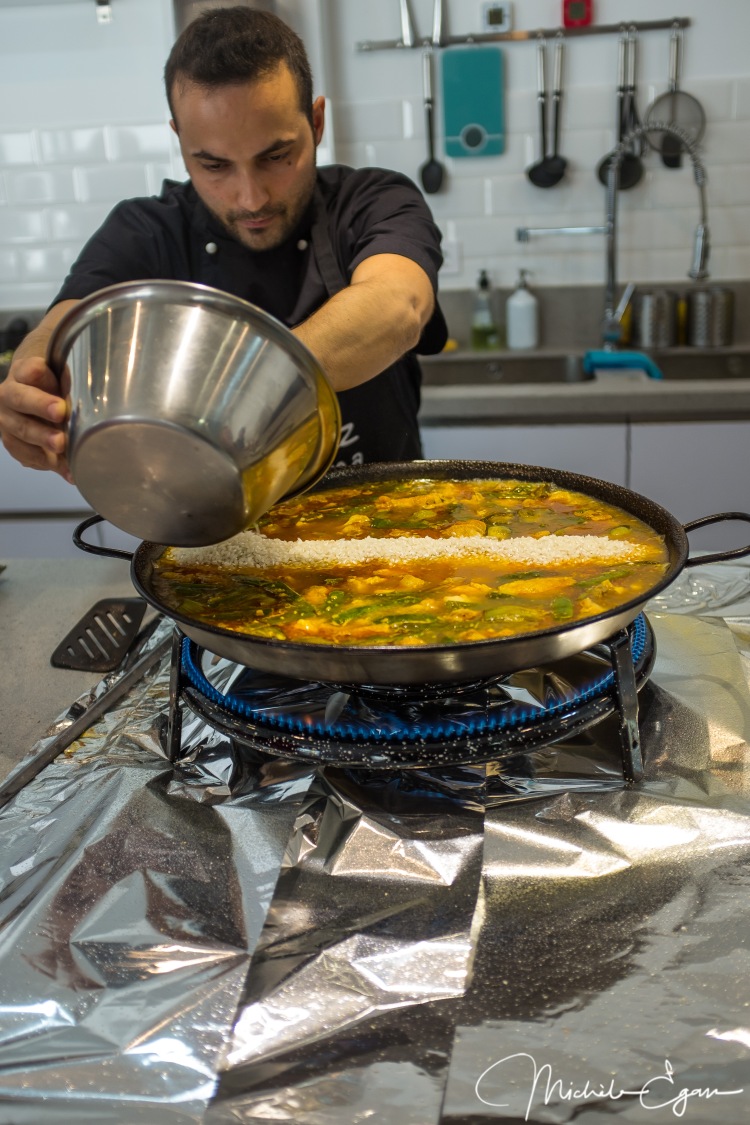
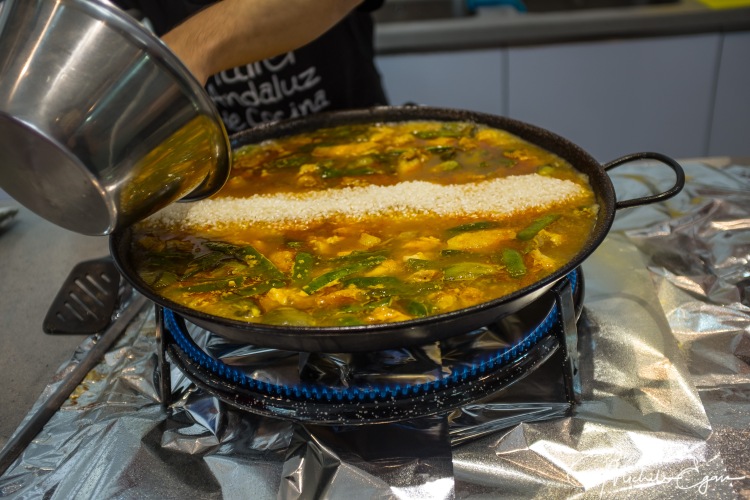
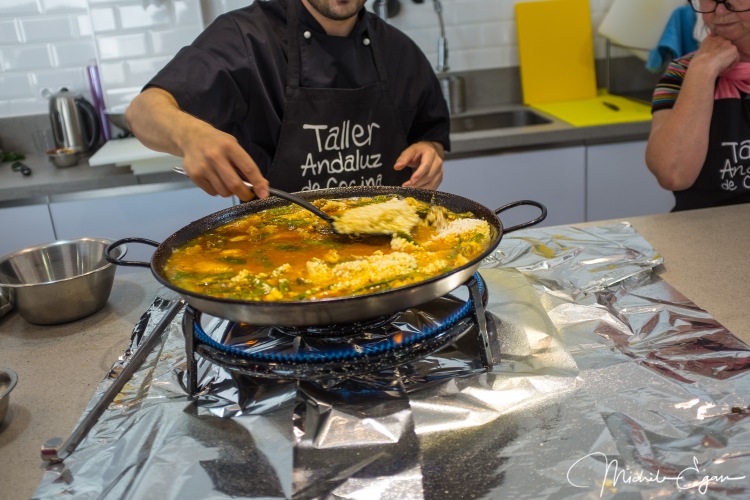
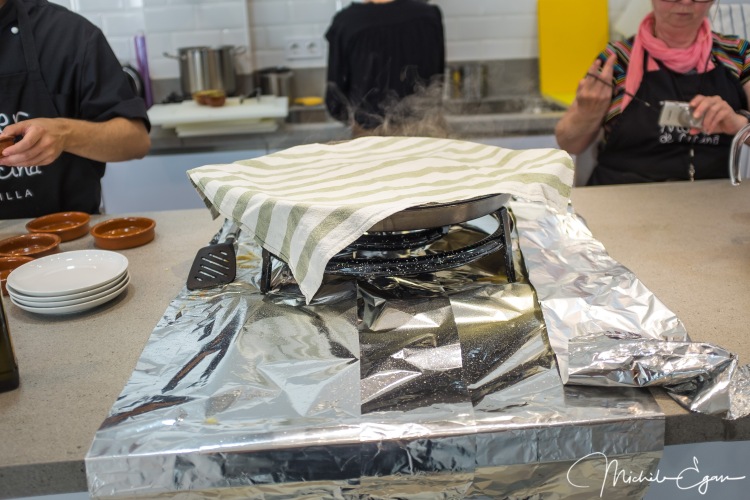
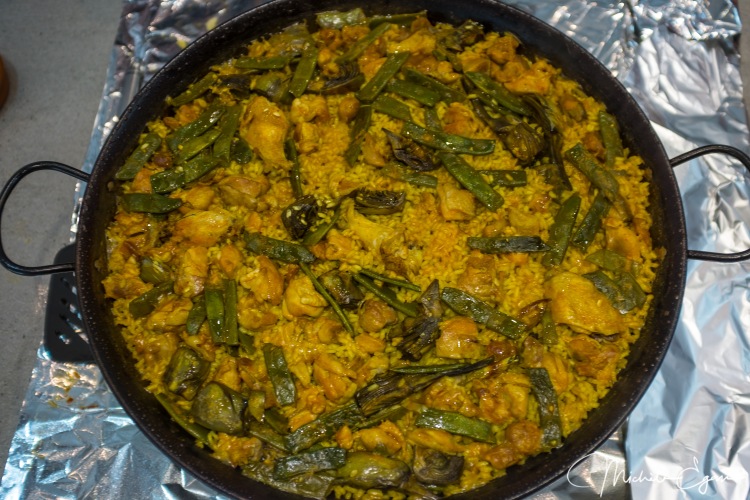
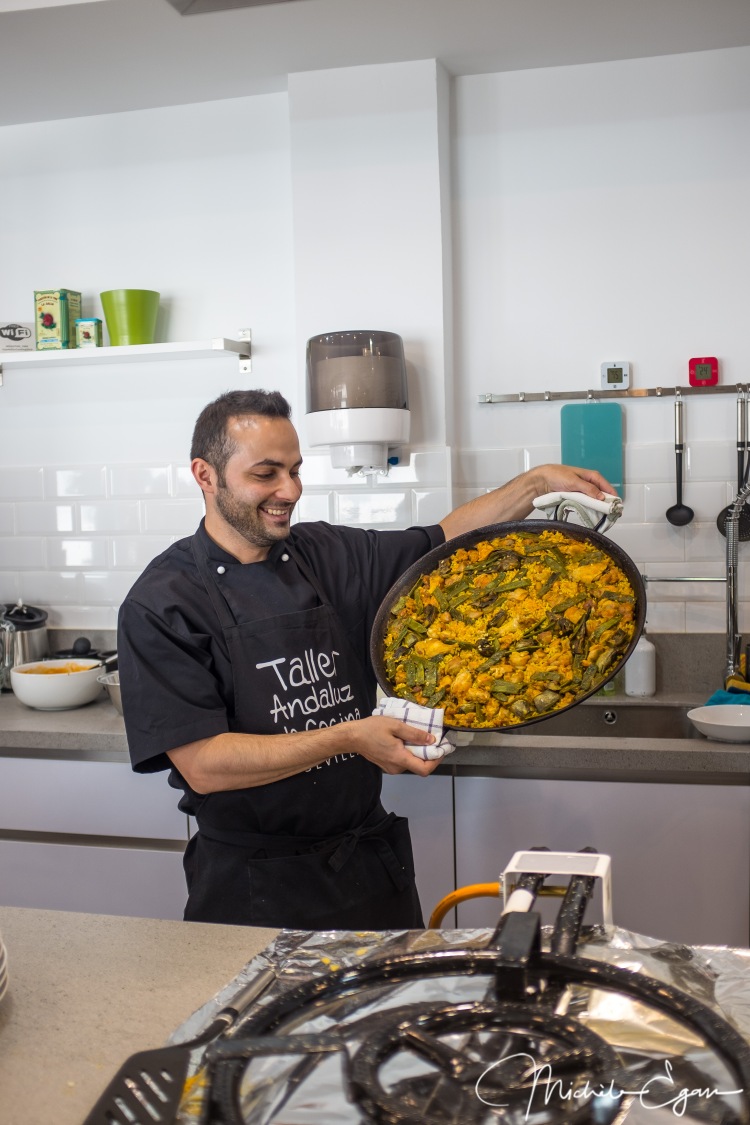
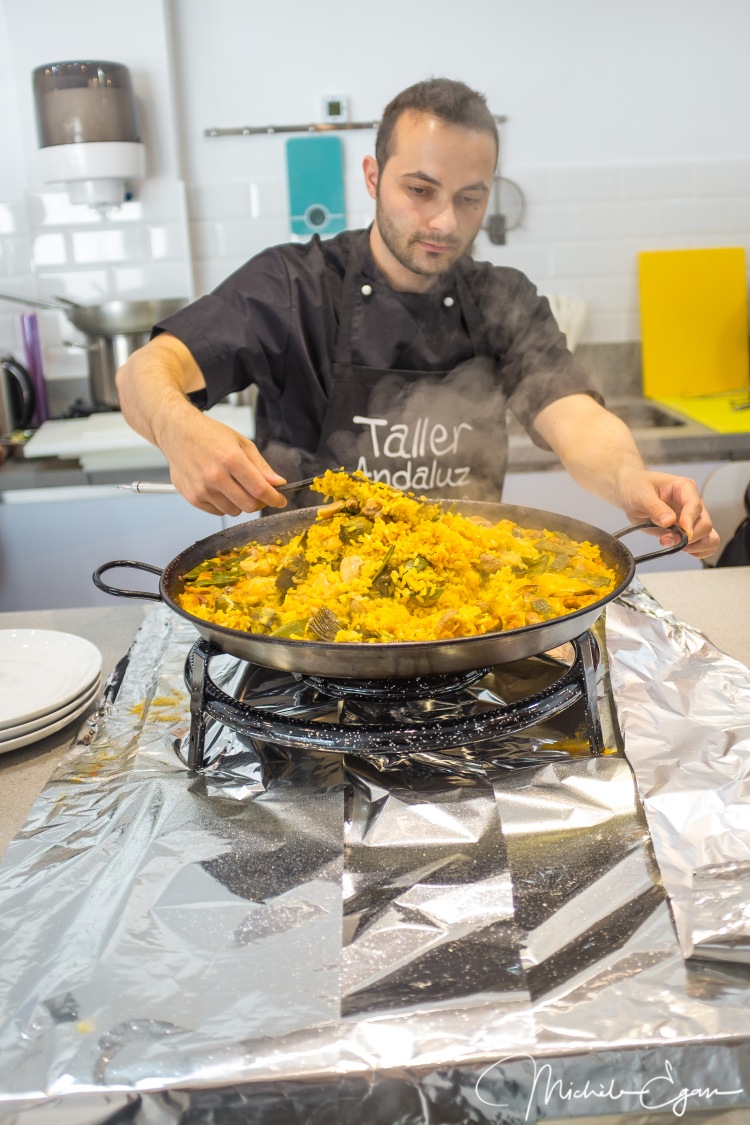
And finally, it was time to enjoy all that heavenly goodness. Maybe it was because we cooked it ourselves, but that was one of the best meals I’ve had since arriving in Sevilla!
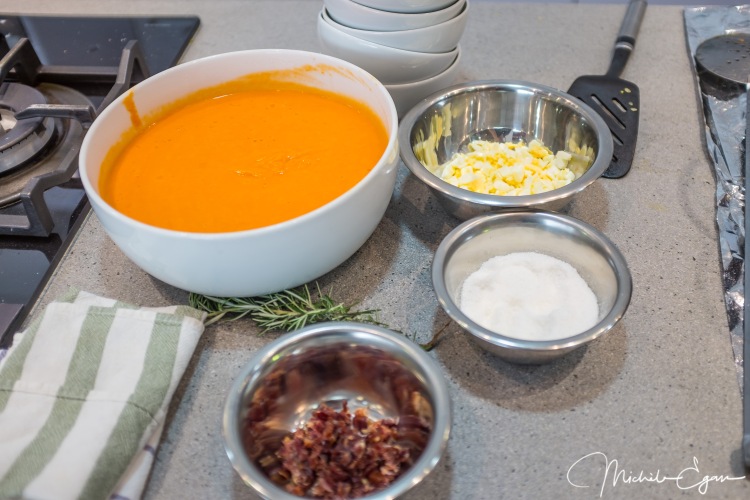
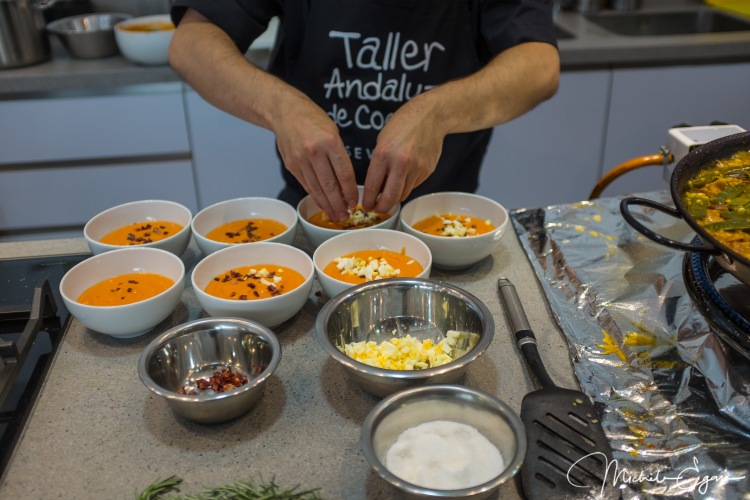
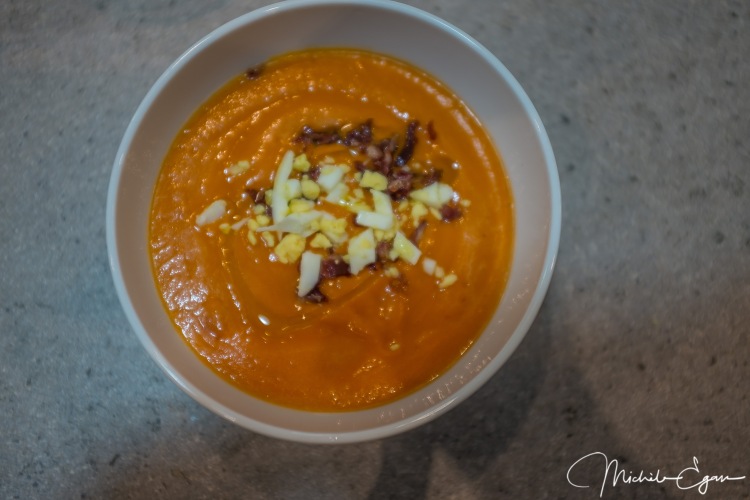
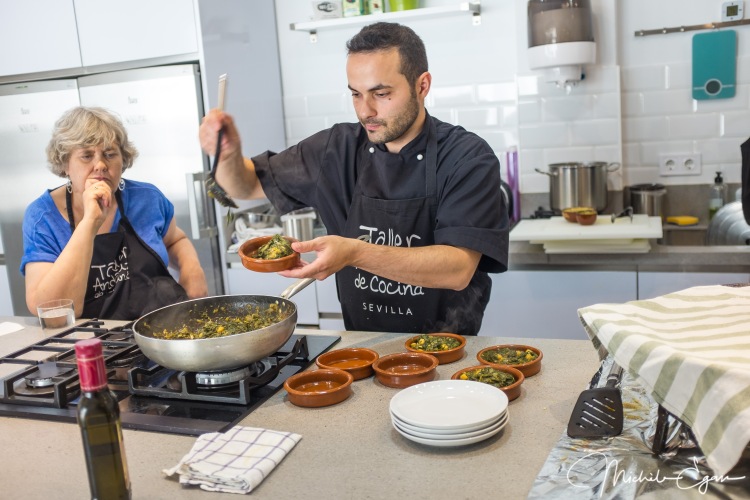
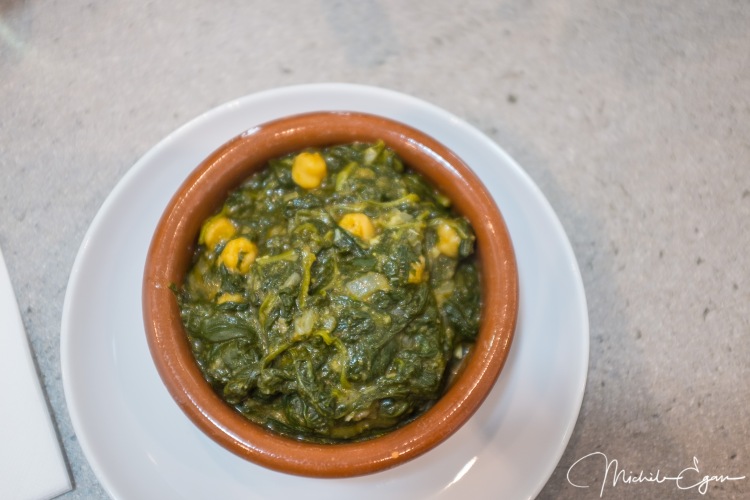
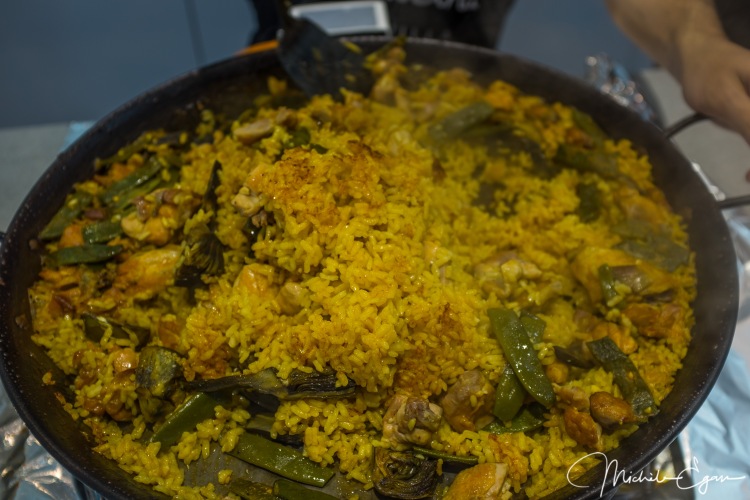
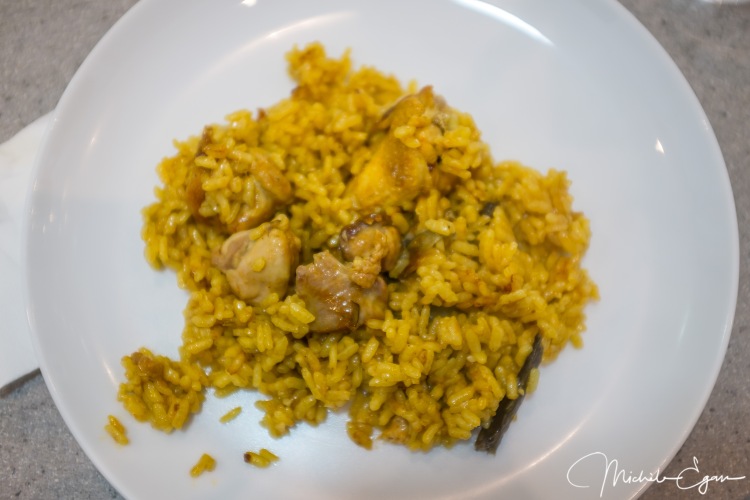
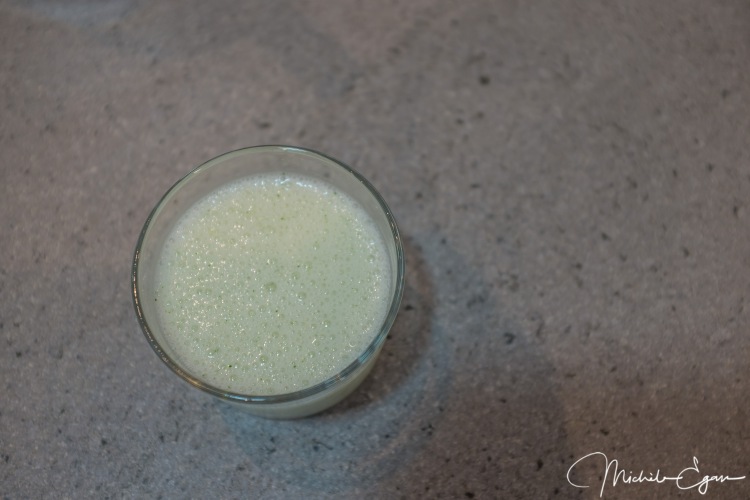
Information on Taller Andaluz de Cocina:
Location: Mercado de Abastos de Triana, Stalls 75-77
Plaza del altozano, 41010, Sevilla, Spain
website: http://www.tallerandaluzdecocina.com
email: info@tallerandaluzdecocina.com
They offer 2-4 classes per day and you’ll need reservations: one or two days before on weekdays and up to two weeks before for weekends.





I can taste it all over again. Que magnificas son las fotos! (Yes, fotos is feminine).
LikeLiked by 1 person
Hey stranger! Good to hear from you 🙂
LikeLike